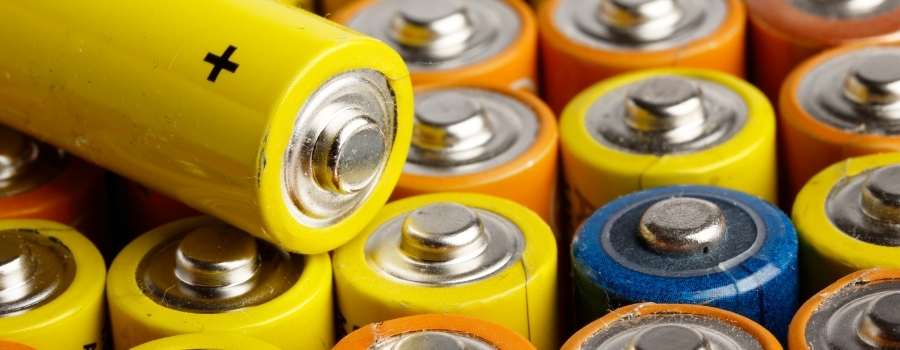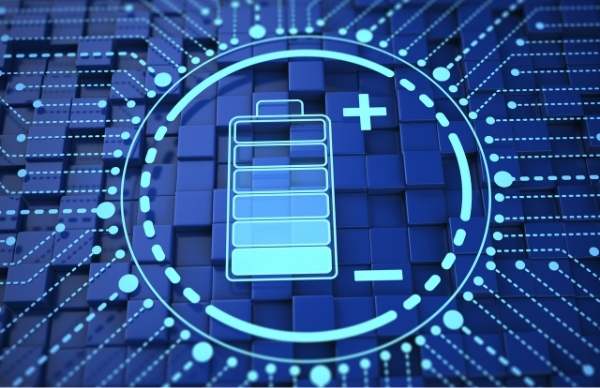
Many of us love to decorate our backyards into viable living and entertaining spaces. Most of the time this involves some sort of mood lighting, most commonly solar outdoor lighting…and this is a great option! Over time even these lights will eventually dim which may have you wondering if solar lights have batteries that can be replaced?
Solar lights do have batteries. Without a battery, solar lights can’t hold onto the energy it gathers, so all solar lights will have a battery of some sort inside them.
The battery will usually be in a waterproof compartment to protect it, but you should still check for corrosion and damage every so often to make sure it’s not getting wet.
Table of Contents
How Long do Solar Light Batteries Last
Unfortunately, solar batteries don’t last forever and will only last a couple of years before they die. In spite of attempts to design the casings to be waterproof, some succumb to weather damage, but even those that don’t will often only last for around 600 charges.
With 365 days in a year, you can see that’s probably about (or slightly less than) two years of use, assuming that your solar panel is charging every day. It might surprise you that a product like a solar light should be so short-lived, but many are.

You may notice that over the span of two years, your light doesn’t stay lit for as long; where you originally saw six or seven hours of light from a single charge, you might only see an hour or so.
Eventually, the batteries simply don’t hold enough charge to power your light anymore, and the whole thing seems dead.
You may be able to extend the life of your battery by bringing it in if the weather is particularly cold, as the batteries can be affected by freezing, and most solar lights are not well-insulated.
You can also slightly extend the battery life by turning the lights off if you are not anticipating them being used for some time – for example, if there is an extended period of bad weather coming your way.
However, even if you do this, most will not last much longer than two years at best. That might seem pretty frustrating when you bear in mind that the LEDs can last more than thirty years in good circumstances.
Types of Batteries
Different types of batteries offer various advantages and limitations, depending on their chemical composition and design.
Lead-Acid Batteries
- Features: Lead-acid batteries are one of the oldest types of rechargeable batteries. They consist of lead dioxide (PbO2), sponge lead (Pb), and a sulfuric acid solution. Known for their high power-to-weight ratio, these batteries deliver a large amount of current and are cost-effective.
- Applications: Due to their robustness and affordability, lead-acid batteries are commonly used in off-grid solar systems and larger solar lighting applications, such as street lighting. However, their heavy weight and lower energy density make them less suitable for portable solar lights.
Nickel-Cadmium (NiCd) Batteries
- Characteristics: NiCd batteries are known for their long life and ability to perform well in extreme temperatures. They consist of nickel oxide hydroxide and metallic cadmium electrodes. NiCd batteries offer a steady voltage level and can endure a high number of charge/discharge cycles.
- Usage: Their resistance to low temperatures and high endurance make NiCd batteries suitable for outdoor solar lighting in harsh environments. However, their use is declining due to environmental concerns regarding cadmium, a toxic heavy metal.
Nickel-Metal Hydride (NiMH) Batteries:
- Properties: NiMH batteries are similar to NiCd but use a hydrogen-absorbing alloy instead of cadmium. They have a higher capacity and energy density than NiCd batteries and are more environmentally friendly.
- Benefits: These batteries are ideal for consumer solar products, such as garden lights and small decorative solar lights. Their higher energy density allows for smaller, lighter designs without sacrificing performance. NiMH batteries also have a lower self-discharge rate compared to NiCd batteries.
Lithium-Ion Batteries
- Advantages: Lithium-ion batteries are lightweight, have a high energy density, and a low self-discharge rate. Their high efficiency and capacity for greater energy storage make them increasingly popular in solar applications.
- Best Uses: Lithium-ion batteries are ideal for portable solar lights, residential solar lighting systems, and smart solar street lights. Their compact size and light weight make them suitable for integrated solar lighting solutions where space and weight are critical factors.
Factors Affecting Battery Performance
The key factors include the impact of temperature on efficiency, the effect of charging cycles on lifespan, and the importance of regular maintenance.
Temperature
- High Temperatures: High temperatures can accelerate chemical reactions inside the battery, increasing efficiency but also leading to faster degradation of the battery components.
- Low Temperatures: Low temperatures slow down the chemical reactions within the battery, reducing its ability to hold and deliver charge. This is particularly noticeable in lead-acid and NiCd batteries, where cold conditions can lead to a substantial drop in available capacity.
Charging Cycles
- Charging Cycle: A charging cycle occurs when a battery is charged and then discharged.
- Deep Discharge and Overcharging: Frequent deep discharges (using most of the battery’s capacity) can shorten the lifespan of solar batteries. Similarly, overcharging can lead to decreased battery life.
Maintenance
- Regular Checks: Periodic inspection and maintenance of solar batteries can significantly extend their useful life. This includes checking for corrosion, ensuring connections are clean and tight, and verifying that the battery is operating within its recommended temperature range.
- Proper Storage: If solar lights are not in use, batteries should be stored properly. This means keeping them in a cool, dry place and partially charged.
- Cleanliness and Ventilation: Keeping the solar panels clean ensures maximum efficiency in charging the batteries. Proper ventilation, especially for lead-acid types, helps prevent overheating and to allow any gases formed during charging to dissipate.
How to Replace Solar Light Batteries
If your solar lights are clean but still seem dim or aren’t providing much light, it’s time to check the batteries.
Luckily, most solar lights are designed with battery replacement in mind. All you need to do is find the battery compartment and then determine what type of battery your lights use, i.e: NiMH, NiCd, or Lithium Ion.
Steps for Replacing Batteries in Solar Lights
- Safety First: Always turn off the solar light before attempting to replace the battery. If there’s an on/off switch, use it to turn off the unit.
- Accessing the Battery Compartment: Locate the battery compartment, which is typically secured with screws or a snap-fit lid.
- Removing the Old Battery: Carefully remove the old battery. Take note of how it’s placed, as this will guide you in installing the new battery.
- Choosing the Right Replacement: Purchase a replacement battery that matches the specifications of the old one. Pay attention to the voltage, capacity (mAh), and size.
- Installing the New Battery: Insert the new battery in the same orientation as the old one. Ensure that the connections are secure and that the battery fits snugly in its compartment.
- Testing the Light: After replacing the battery, leave the solar light under direct sunlight to charge. This might take a day or two. Then, test the light to ensure it’s working properly.

Considerations and Best Practices
- Battery Quality: Opt for high-quality batteries from reputable brands. Cheaper alternatives might not offer the same performance or lifespan.
- Environmental Factors: Consider environmental factors like temperature extremes in your area when choosing a replacement battery, as some types perform better under certain conditions than others.
- Recycling Old Batteries: Properly dispose of the old batteries by recycling them. Many stores that sell batteries also offer recycling services.
Frequently Asked Questions
Can I use regular batteries in my solar lights?
It’s not recommended to use regular alkaline batteries as replacements in solar lights. Solar lights are designed to be used with rechargeable batteries, such as NiMH or Lithium-ion, which can handle the charge and discharge cycles.
Why do my new solar light batteries drain quickly?
If new batteries drain quickly, it might be due to insufficient charging, especially if they haven’t been exposed to enough sunlight. Also, check if the solar panels are clean and unobstructed. Sometimes, it could be a fault in the solar light unit itself.
Is it necessary to charge the new batteries before first use?
It’s generally a good idea to fully charge the new batteries before first use. This can be done by leaving the solar lights under direct sunlight for 1-2 days.
Can I use higher capacity batteries?
Using batteries with a higher capacity (mAh) can potentially provide longer runtime, but it won’t affect the brightness of the light. Ensure the voltage matches and the physical size fits the solar light unit.
